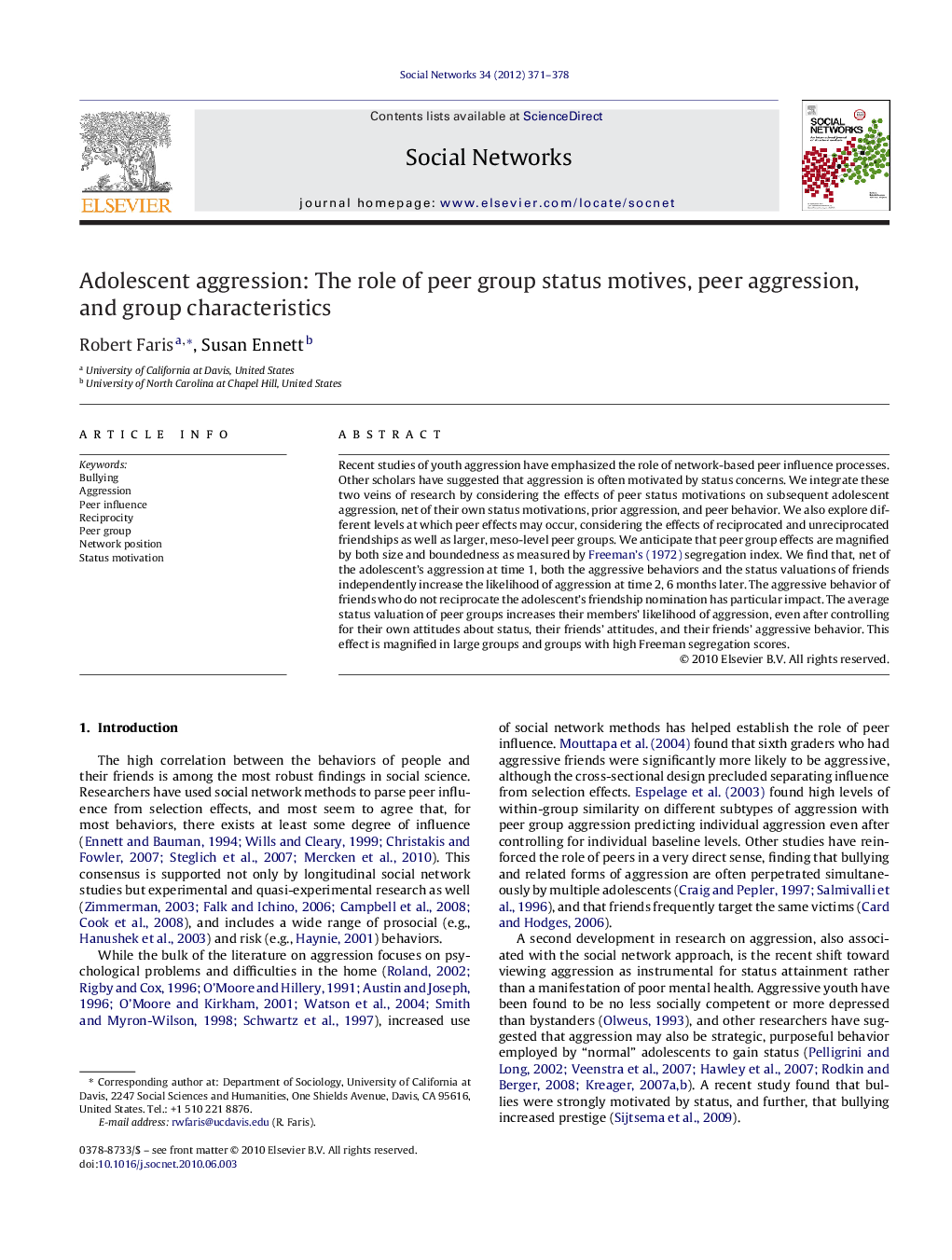| کد مقاله | کد نشریه | سال انتشار | مقاله انگلیسی | نسخه تمام متن |
|---|---|---|---|---|
| 1129316 | 955246 | 2012 | 8 صفحه PDF | دانلود رایگان |

Recent studies of youth aggression have emphasized the role of network-based peer influence processes. Other scholars have suggested that aggression is often motivated by status concerns. We integrate these two veins of research by considering the effects of peer status motivations on subsequent adolescent aggression, net of their own status motivations, prior aggression, and peer behavior. We also explore different levels at which peer effects may occur, considering the effects of reciprocated and unreciprocated friendships as well as larger, meso-level peer groups. We anticipate that peer group effects are magnified by both size and boundedness as measured by Freeman's (1972) segregation index. We find that, net of the adolescent's aggression at time 1, both the aggressive behaviors and the status valuations of friends independently increase the likelihood of aggression at time 2, 6 months later. The aggressive behavior of friends who do not reciprocate the adolescent's friendship nomination has particular impact. The average status valuation of peer groups increases their members’ likelihood of aggression, even after controlling for their own attitudes about status, their friends’ attitudes, and their friends’ aggressive behavior. This effect is magnified in large groups and groups with high Freeman segregation scores.
Journal: Social Networks - Volume 34, Issue 4, October 2012, Pages 371–378